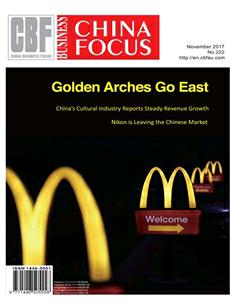Chinese Construction Firm Plans to Buy Cana da’s Aecon

CCCC has expanded its overseas presence in recent years, inking deals to acquire U.S. and Australian firms and working on a $1.4 billion port project in Sri Lanka. State-owned China Communications Construction Co. (CCCC) has agreed to buy Canadas largest publicly listed infrastructure construction company Aecon Group Inc. for CA$1.45 billion ($1.13 billion). Under the proposed deal, which is subject to Canadian government regulatory approval and an Aecon shareholders vote, the Torontobased company would become a wholly owned subsidiary of CCCCs overseas investment unit. The plans calls for Aecon to be eventually delisted from the Toronto Stock Exchange, CCCC said in a Hong Kong Stock Exchange filing. The board of directors at Aecon — a builder of bridges, mining facilities, skyscrapers and airports — has been actively seeking a buyer, according to a company press release. The board welcomed CCCCs bid, the company said, and has unanimously recommended shareholders approve the buyout when they meet in December. The deal values Aecon shares at CA$20.37 per share, a 42% premium on Aecons closing price the day before the deal was announced. An Aecon takeover would give CCCC“a strong presence in the attractive Canadian market” said the Chinese company, which is listed in Hong Kong and Shanghai. Aecon would retain its name, Canadian headquarters and management team after the buyout, the filing said. CCCC bought the U.S. engineering company Friede Goldman United Ltd. for $125 million in 2010 and the Australian construction firm John Holland Group for $879 million in 2015. Its currently leading a $1.4 billion port construction project in Colombo, Sri Lanka.
China to Emphasize Quality Over Speed for Economic Growth
The omission of new gross domestic product growth targets “was meant to better carry out our new development principle,” the vice minister of the Office of the Central Leading Group on Financial and Economic Affairs said. The omission of new economic-growth targets in Chinas latest development blueprint reflects top leaders determination to prioritize the quality of growth over speed, a senior official said. President Xi Jinping did not mention a longterm target of domestic gross product(GDP) growth beyond 2020 last week, when he unveiled the road map for the countrys economy through 2050 at the twice-a-decade National Party Congress.As the second-largest economy after the U.S., Chinas official growth targets are always closely watched globally. In previous party congresses, top leaders had announced its goal of doubling Chinas GDP and per-capita income by 2020 from 2010. “Chinas economy has transitioned into a stage of high-quality development from the stage of highspeed growth,” Yang Weimin, vice minister of the Office of the Central Leading Group on Financial and Economic Affairs, told reporters. The omission of new targets “was meant to better carry out our new development principle,”Yang said.“We must address imbalances and insufficiencies in the economy through (improving) quality, efficiency and (growth) drivers,” he added. Premier Li Keqiang in March announced China aims to achieve a GDP growth of “around 6.5% or higher if possible in practice”. The goal is set to be reached as cumulative GDP for the first nine months rose by 6.9%. But the sustainability of growth remains a concern for top leaders, and the government has been pressing ahead with its socalled supply-side reform, which has so far focused on cutting excess industrial capacity such as coal and metals, and deleveraging the economy, especially the financial sector, local governments and state-owned enterprises.endprint
Next-Generation Rail Cars Track to Shanghai for Public Debut
A next-generation carriage that will add huge flexibility to Chinas highspeed train fleet made its debut in Shanghai in October, sporting a new double-decker design and the potential for specialty short trains to accommodate VIPs. Dubbed with the temporary name of 3X, the new cars should help China Rail Corp., the national rail operator, in its march to operational profitability, as it seeks to squeeze more money out of its state-of-the-art highspeed rail network, the worlds biggest. Despite its state-of-the-art nature, Chinas current fleet of high-speed trains are relatively inflexible, limited by technology constraints to either eight or 16 carriages. The new carriages will eliminate those limitations, allowing for trains from as short as two carriages, which could be used to transport VIPs, to as many as 16. In addition to their flexibility to meet demand based on seasonal patterns, the new design will also allow for removal of individual cars for maintenance. With the current technology, entire trains must be taken out of service just to make repairs or perform other maintenance to a single carriage. The new design will also feature double-decker capabilities for all cars, including dining, sleepers and regular seating, which will increase capacity by about 50%, officials said, in introducing the new designs that will allow a single train to carry more than 1,500 people. Trains will be able to travel at maximum speeds of 350 kph (217.5 mph), matching the new maximum recently rolled out along the popular Shanghai-toBeijing line. Most other trains currently travel at a maximum speed of 300 kph. China has spent hundreds of billions of dollars over the last decade building a 22,000-kilometer state-of-the-art highspeed rail network, aiming to create a viable travel alternate for flying along popular shorter routes in the country. It also wants to develop high-tech products that can be exported, and has become an aggressive bidder for highspeed rail projects in both developing and developed markets. That aggressive expansion was a driving factor behind the merger announced in September between the rail operations of two of its chief global rivals, Frances Alstom and Germanys Siemens. The latter was also showing off its own next-generation rail car, the ICE4, at the Shanghai event in October. Like the 3X, the Siemens model can be arranged in train configurations of five to 14 carriages, though its maximum speeds are slower, at 230 kph. The Siemens model has been in testing trials for about a year. The 3X is still undergoing testing at the factory where it is being built by CRRC Corp. Ltd., the nations main rail-equipment builder, in the city of Tangshan in North Chinas Hebei province. A timetable for the Chinese models commercial release has yet to be announced.endprint

